Musée d’art contemporain de Montréal
National competition finalist
Provencher_Roy submitted an original proposal in the architecture competition launched in June 2017 for the renewal of the Musée d’art contemporain de Montréal (MAC), for which the construction budget is $22 million. To boost the MAC’s patronage and develop the museum’s clientele, the firm chose to explore the correlation between the evolution of contemporary art and the development of museums. The latter half of the 20th century and the early 21st century have seen contemporary art blossom into a complex combination of means and subjects attracting an international and eclectic audience. To keep apace with this metamorphosis, museums have greatly augmented their spatial capacity for embracing and displaying this multiplicity of artistic expression. Simply expanding the floor area of generic museum “white boxes” would no longer do; rather, museums began to vary the spaces dedicated to supporting a field in ceaseless flux.
Other Collaborators
Arup / Go Multimedia
Country
Canada
City
Montreal
Client
Musée d'art contemporain de Montréal
Year
2018
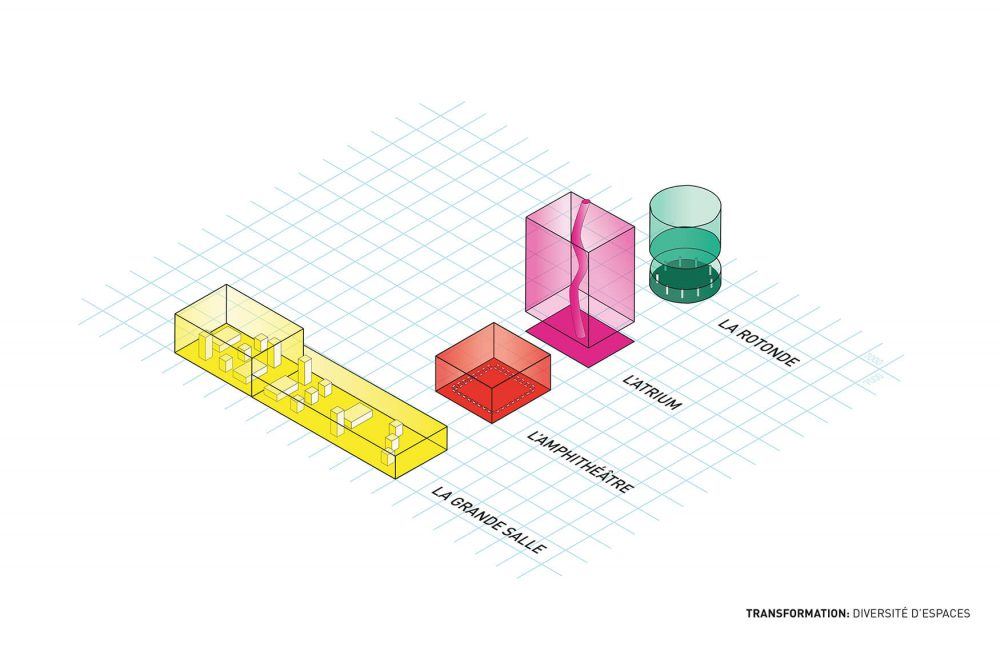
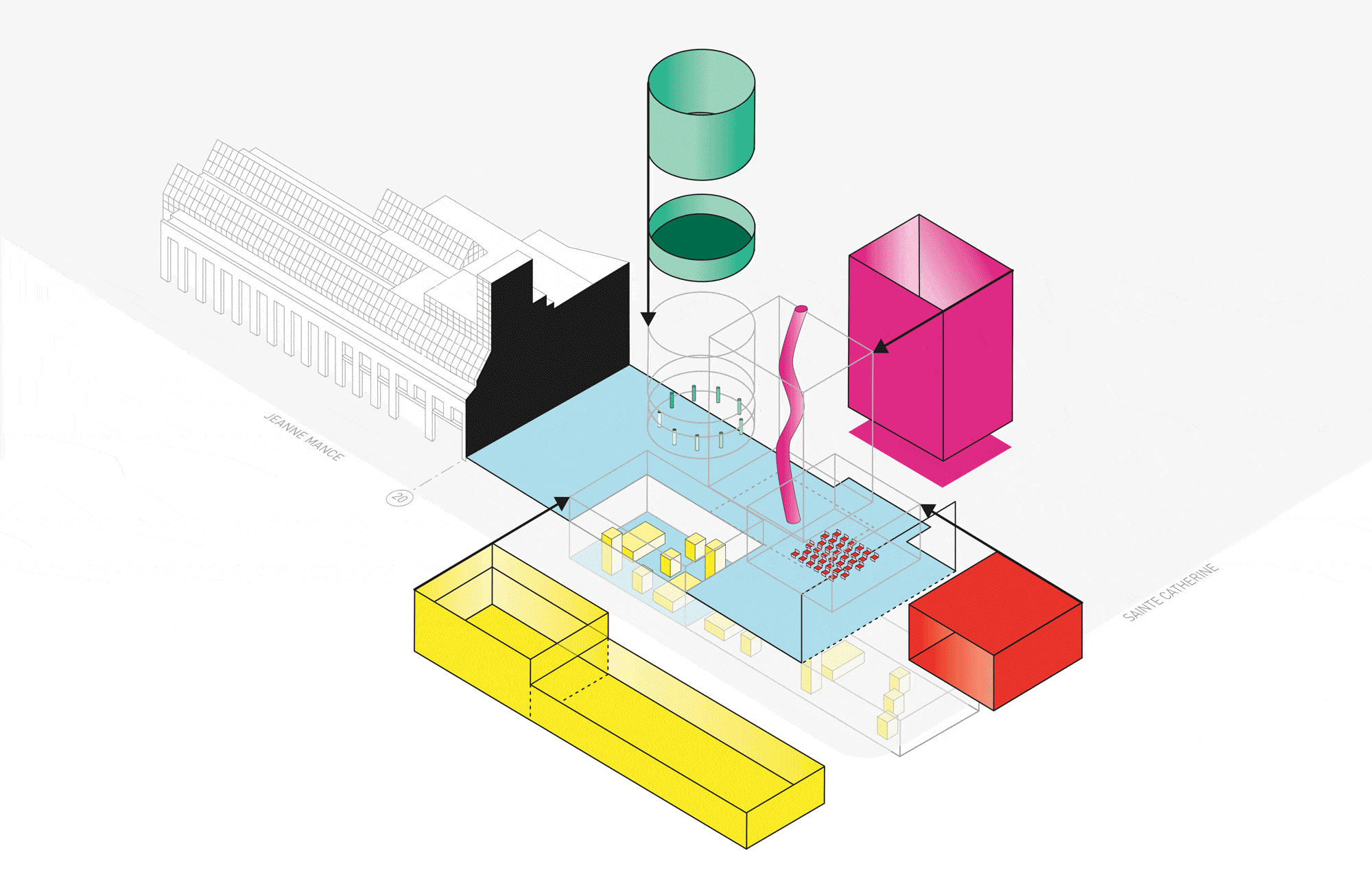
Anchored in the surrounding urban landscape
This proposal positioned the MAC on the national and international stage by diversifying and boosting its capacity to host various artistic media, thus rivalling the world’s most illustrious museums. This transformation also included flexible teaching spaces, open to the public and adjacent to the museological program, which sought to consolidate its mission. At the urban level, this new identity expressed itself through a proximity to Sainte-Catherine Street and the use of large glass event-poster display cases looking onto Place des Festivals and Place des Arts. The project was thus solidly anchored in a rich urban context by creating an interaction with the latter while establishing a strong, distinct identity for the museum. A continuous link was created between the public and contemporary art, outdoors as much as indoors, as can be seen in the proposed external shell and the vertical circulation strategy for the atrium and its adjoining exhibition areas.
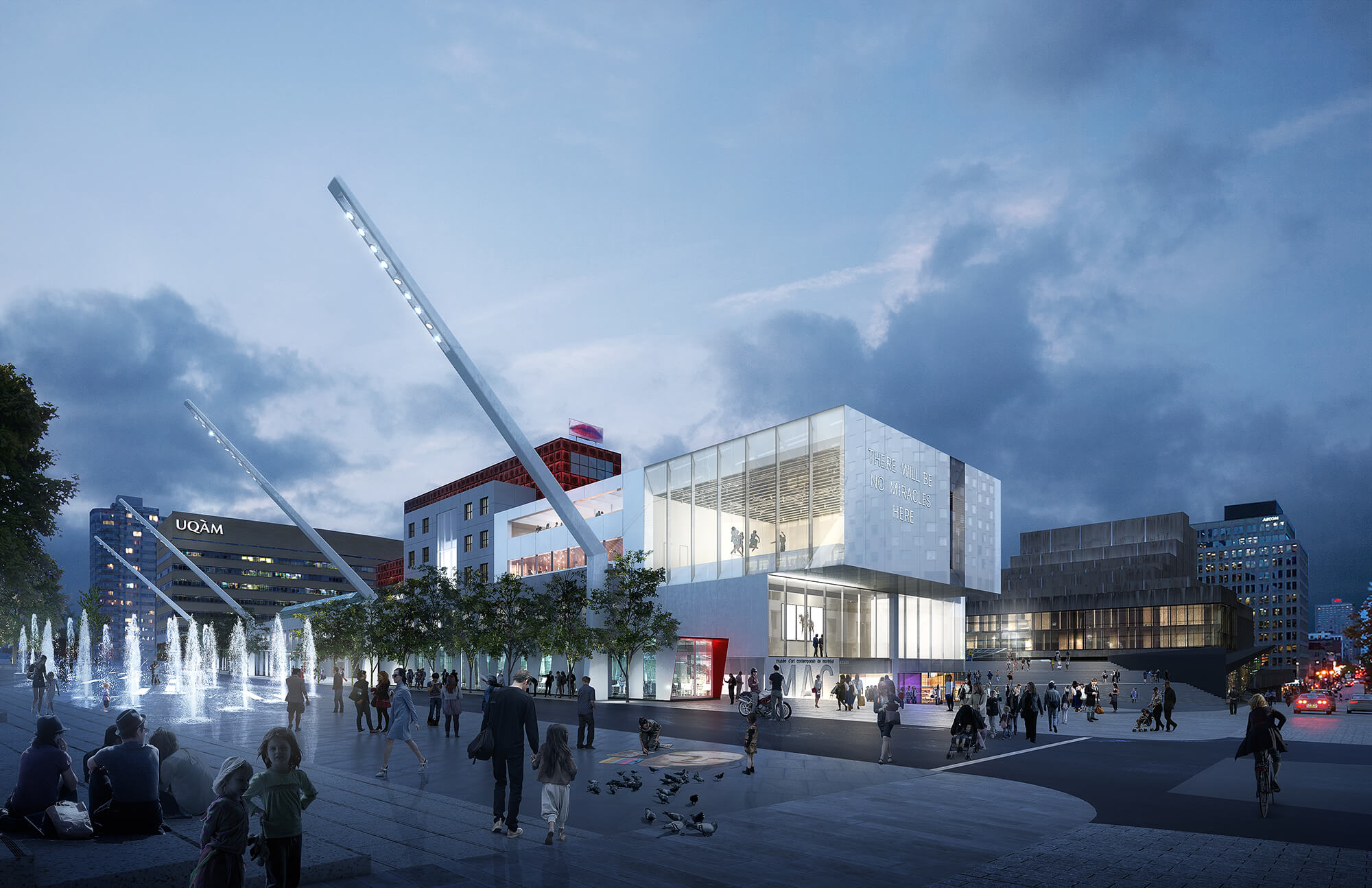
A suspended hall
Designed to host all kinds of exhibitions and conferences, this new hall on the upper level made a strong statement about the MAC’s transformation. Its large openings were aligned with the traffic axes and looked out onto Place des Festivals and Place des Arts, orienting the public with respect to the urban context. Here, Provencher_Roy opted for a plan adapted to a wide array of events: conferences, contemporary dance, exhibitions, fashion shows, and so on. The proposal entailed a free plan with generous extra height, without deployable grandstands, to provide maximum flexibility of uses. The proposed location of the educational spaces made a very public statement about the MAC’s institutional vocation. Thanks to workshops opening out along both the Place des Arts esplanade and Sainte-Catherine Street, the pedagogical aspect was clearly showcased and made visible from the outside. Moreover, the rotunda’s transformation into a games room and modular exhibition space dedicated to youth increased the reach and visibility of the pedagogical component.
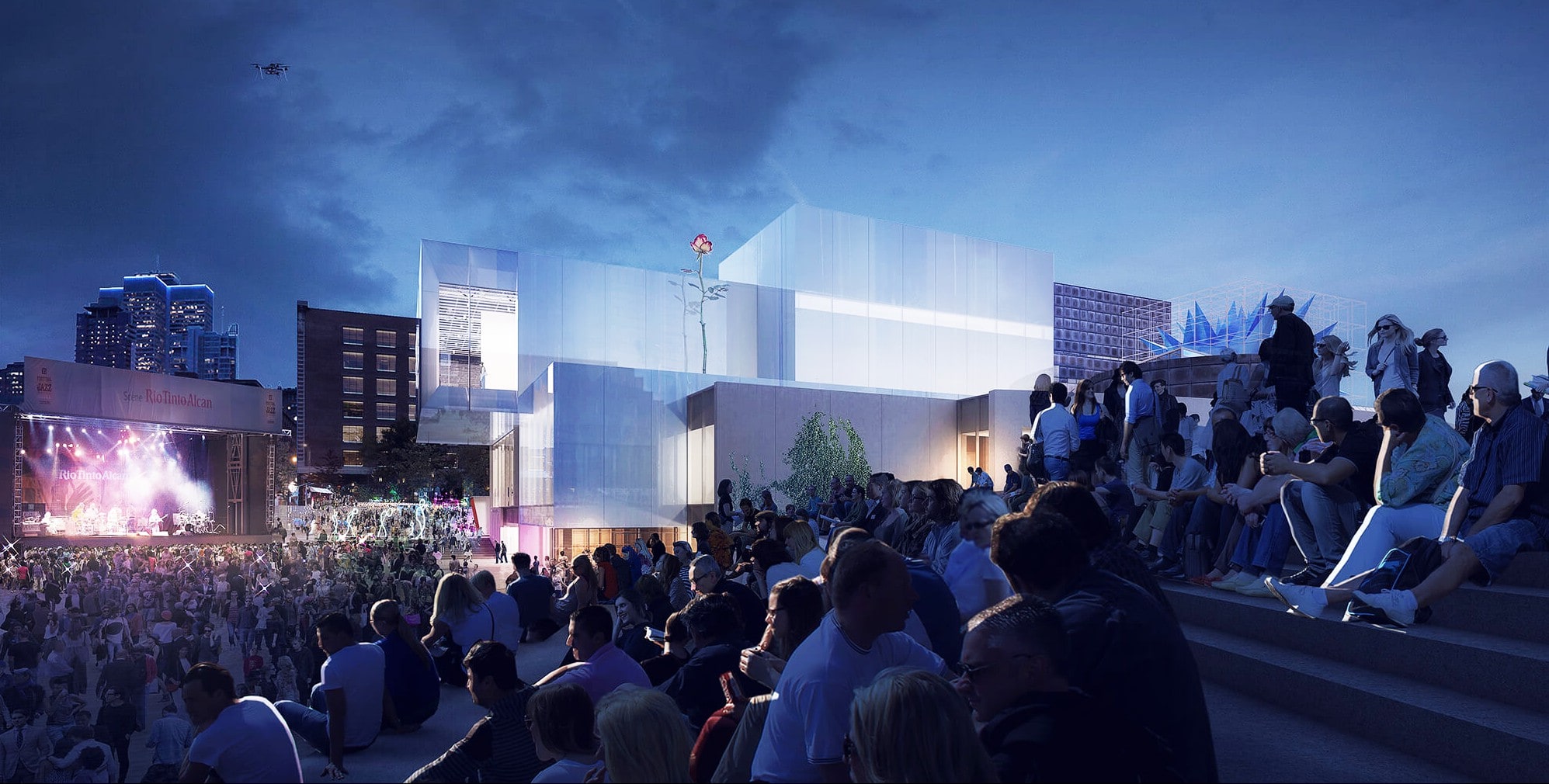
Diversification of spaces
In Provencher_Roy’s view, the future of the MAC is inextricably linked to the diversification of its spaces, which are dedicated to new works and performance. A study of the evolution of contemporary art museums around the world reveals a strong trend away from standard architectural typologies; the identity and formal language of these institutions are the reflection of their large, oversized spaces rather than the result of a particular architectural gesture. Through the diversity and scale of their halls, these museums are investing in a broader spectrum of contemporary art. Moreover, these simple, modular spaces rely on an industrial aesthetic rather than on finishes that make for a less edgy, more lavish frame of reference. It is in this regard that a fine arts museum and a contemporary art museum part ways.
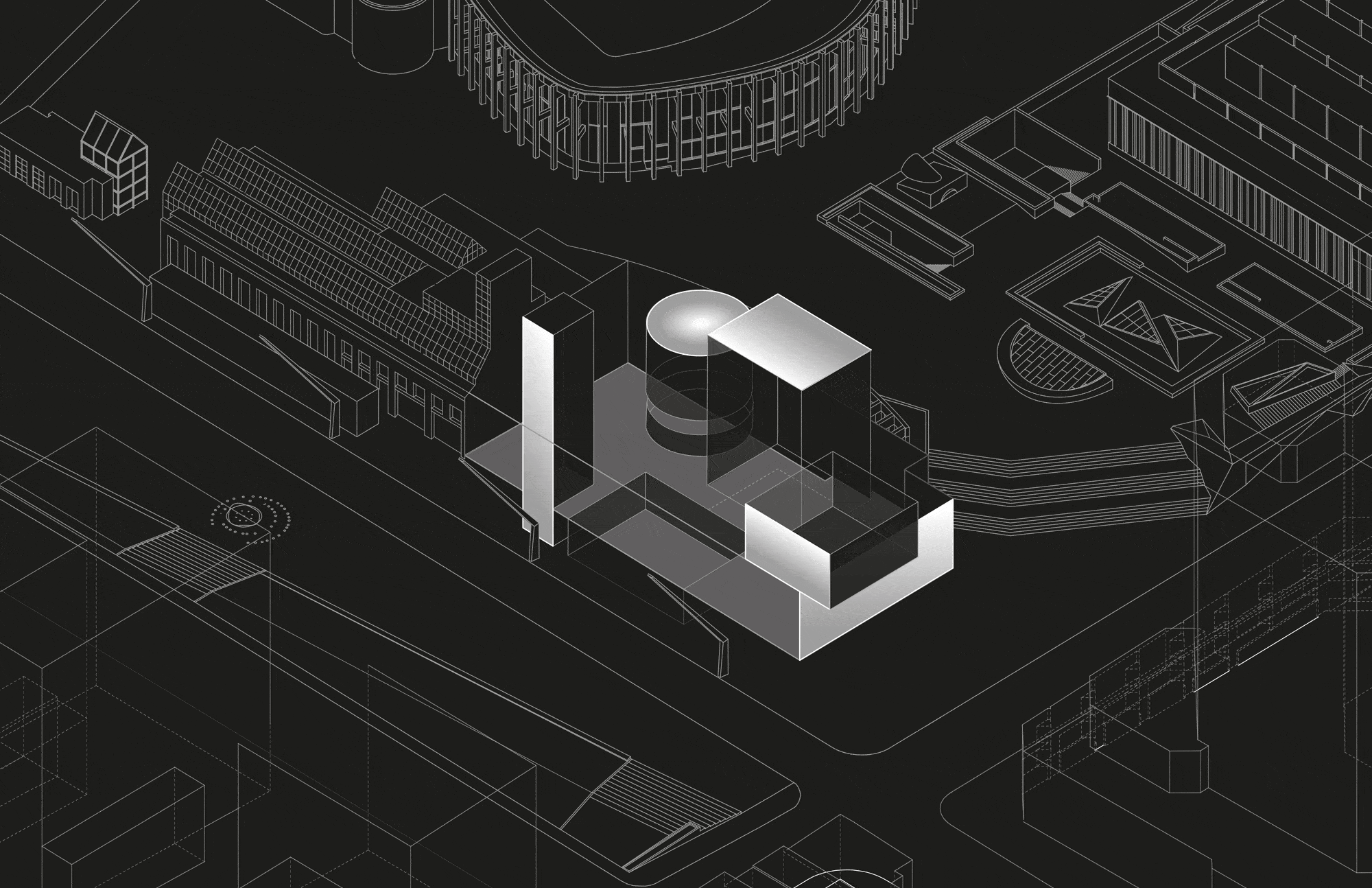
With an explicit reference to the work of artist/architect Gordon Matta-Clark, the designers reasoned that the project should enable an intervention on a found object—the MAC—so as to fulfill the stated aim of space diversification. Thus, like Matta-Clark, the firm expressed a desire to create simple, clear cuttings and openings that would free up new spaces for exhibitions. Before adding any new volume, an effort was made to remove barriers and to carry out internal transformation that would reveal the existing underlying structure. This approach resulted in presenting the same museum, but with a new identity and diversified capacity. Through these bold gestures, the mission of the existing MAC was preserved. As well, there was now potential for creating dramatic spaces to encourage the evolution of contemporary art and support the pedagogical program.
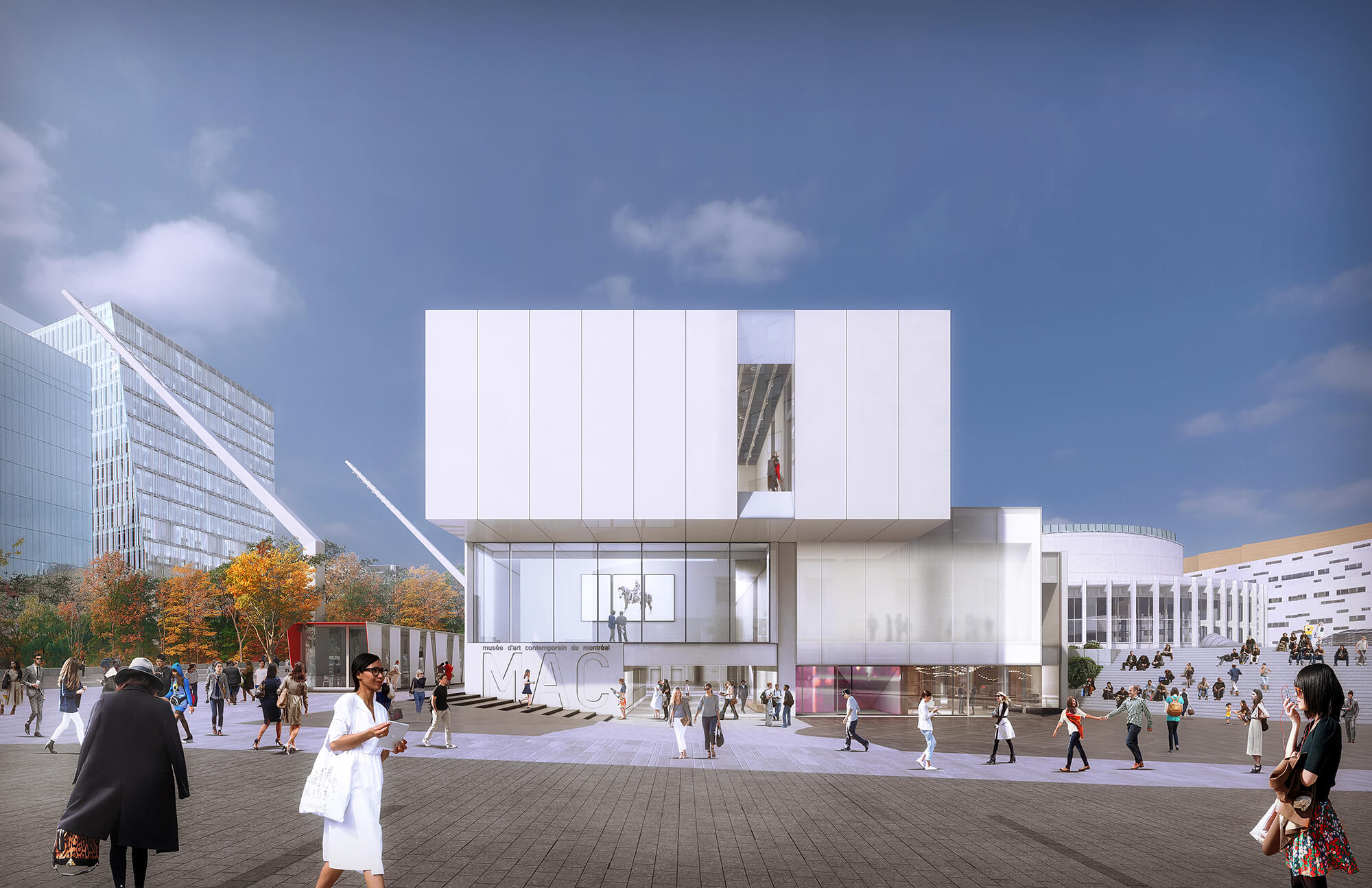
Clear access along Sainte-Catherine Street
This proposal for the new MAC had a strong presence along Sainte-Catherine Street. The new entrance would now be located at one of Montreal’s busiest intersections, readily visible and findable for pedestrians arriving from the east or west and even from the south along Jeanne-Mance Street. Thus, the museum’s main facade would now offer a direct, visible access to the museum, the boutique and the restaurant thanks to a dedicated, independent entrance. Located on the upper level, the restaurant occupied two floors and had an outdoor deck overlooking Place des Festivals. As well, adjacent to the restaurant, the new, overhanging exhibition hall could be accessed outside normal hours of operation by using the elevator reserved for the restaurant. This upper level also featured a 340 m2 outdoor deck looking out onto Place des Arts. All the common spaces on level 2 were potentially accessible 24 hours a day, without requiring access to the museum, thanks to a system of movable partitions.
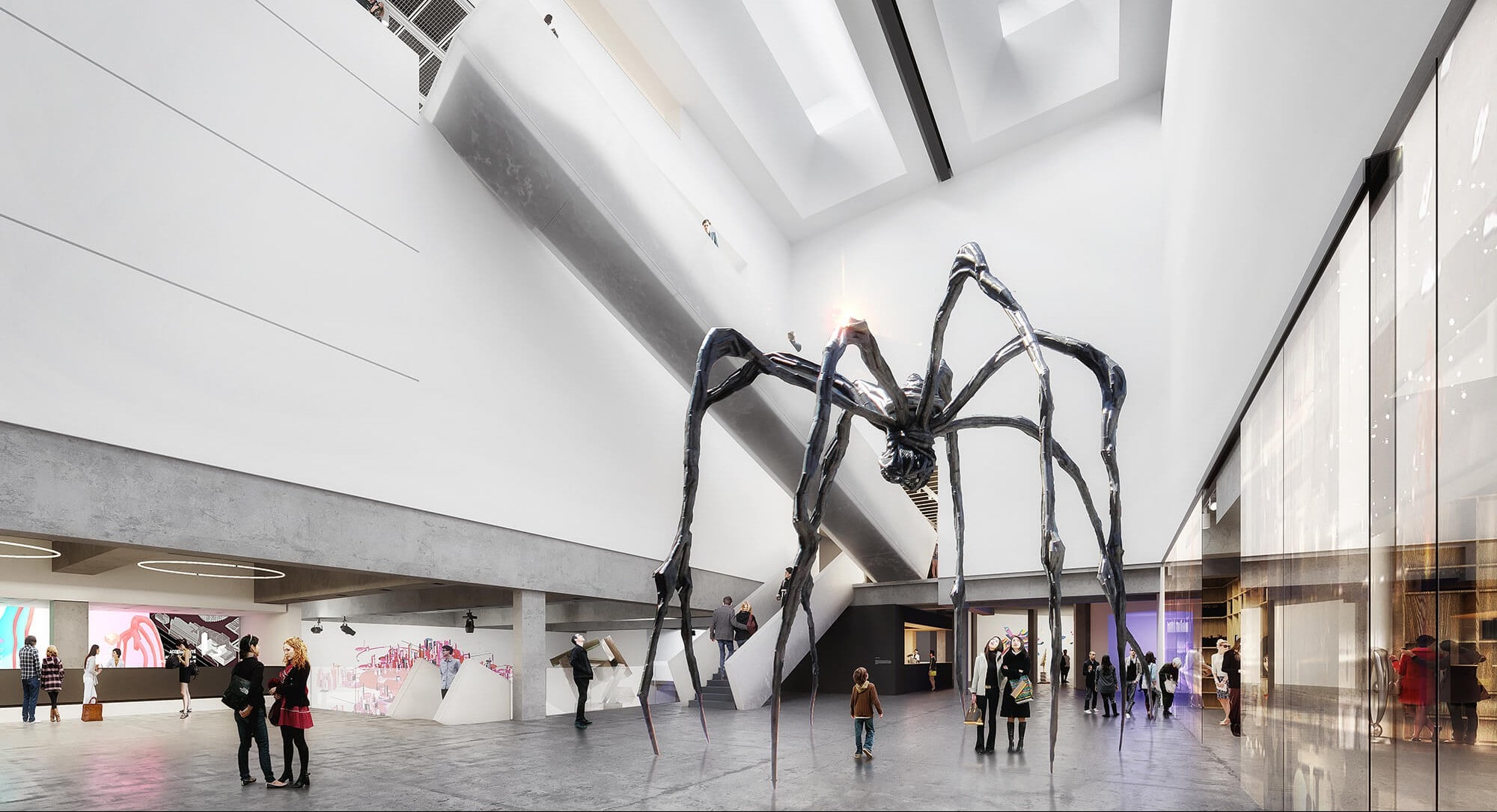
A proposal that supports the evolution of contemporary art
The new exhibition halls were designed to reflect the changing spatial needs observed over the course of contemporary art’s evolution. This constituted the project’s conceptual core: to provide modular, scalable, oversized spaces. This diversification of the proposed spaces was capable of housing a wide variety of works that could be oriented vertically or horizontally, in a compressed or ephemeral manner. By opting for a strategy of rough-and-ready finishes, the firm invested heavily in the new spaces dedicated to exhibitions and education. The design thus proposed, beyond the requisite program, 350 m2 of additional exhibition halls, 340 m2 of outdoor exhibition space, and 130 m2 of additional teaching space and exhibition areas, varying in height between 10 and 22 metres, or reaching up to 70 metres in length. This approach ensured the MAC’s longevity as an institution able to fulfill its mission and to disseminate and support the evolution of contemporary art.